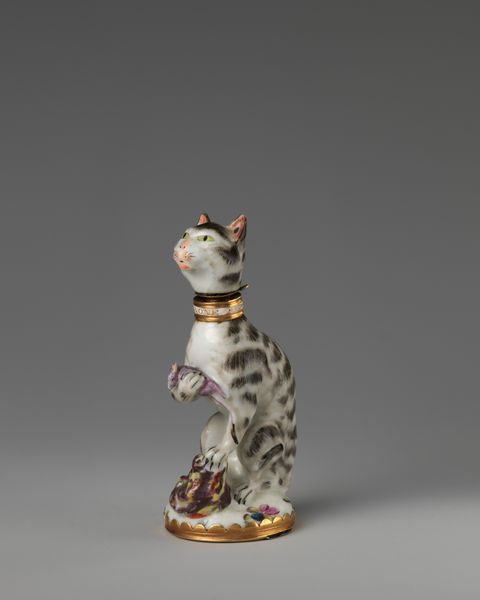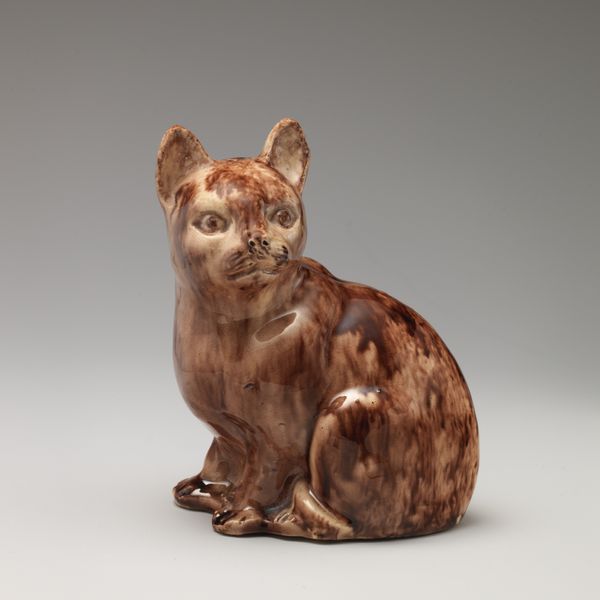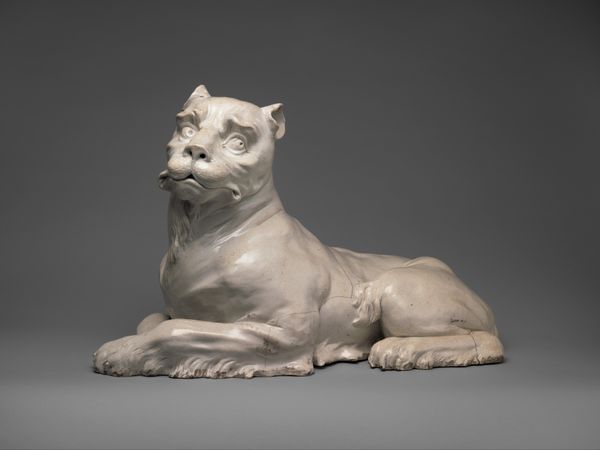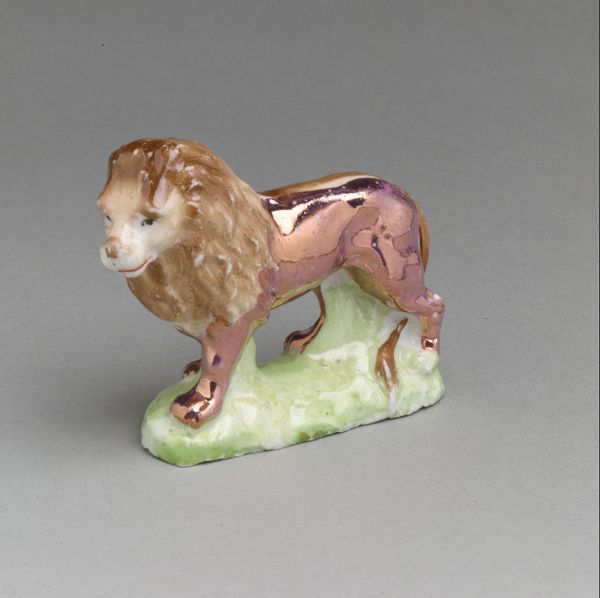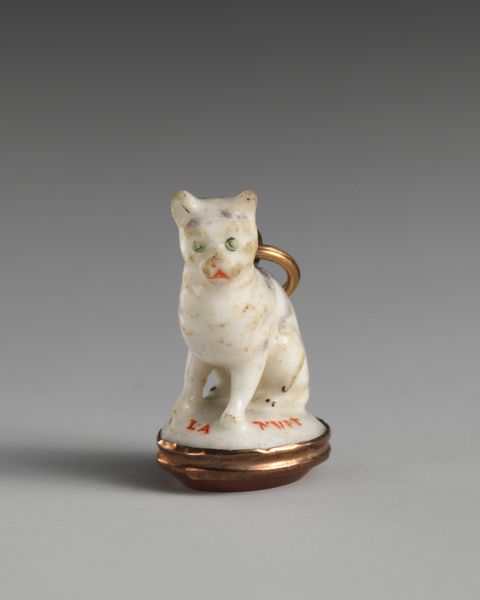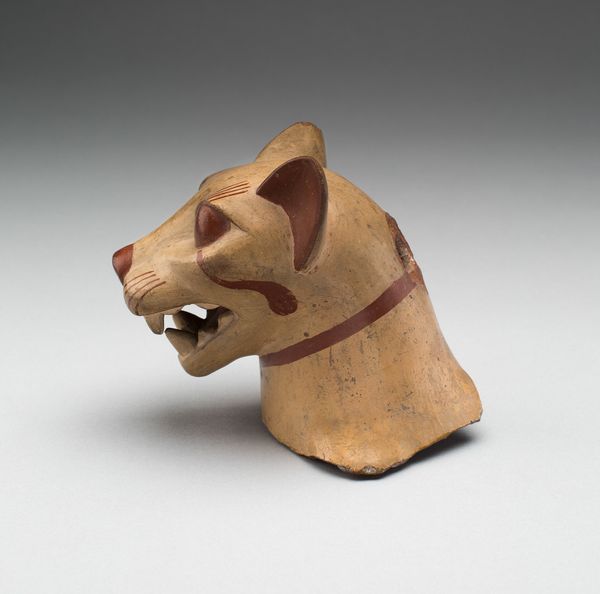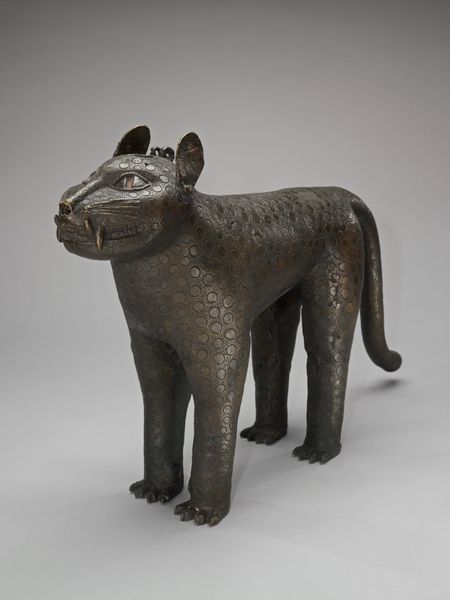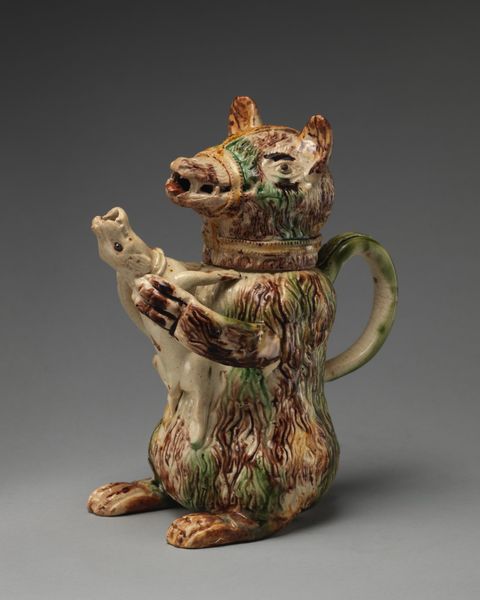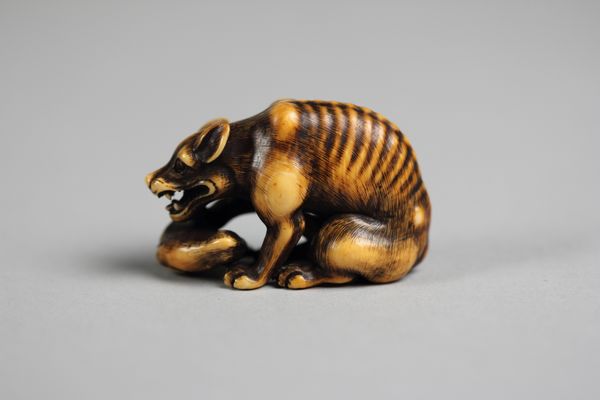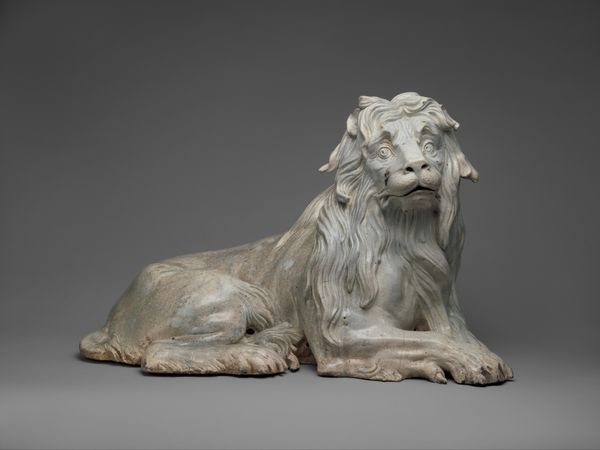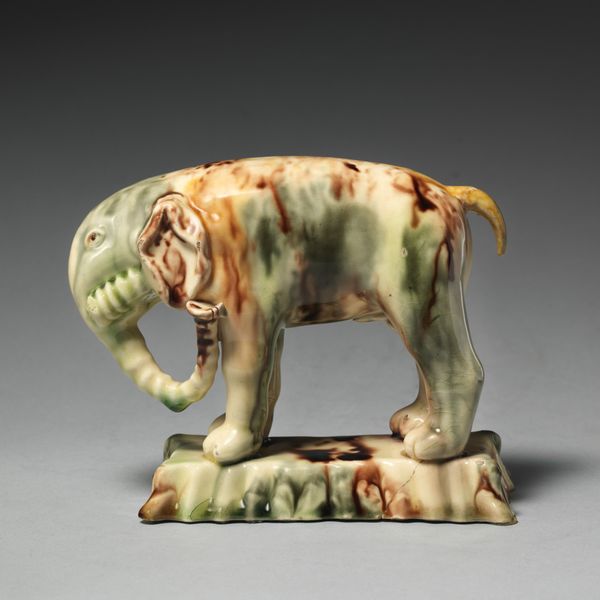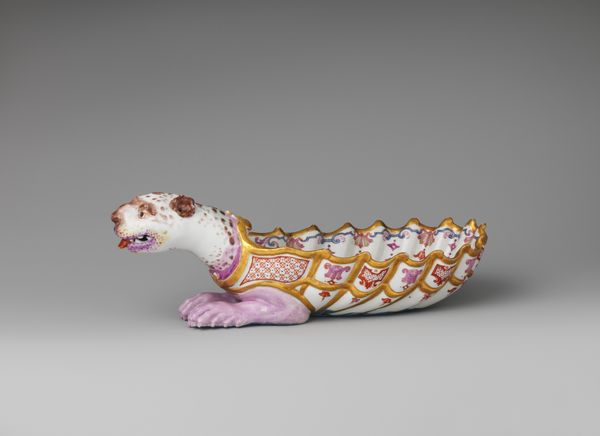
ceramic, porcelain, sculpture
#
animal
#
ceramic
#
porcelain
#
figuration
#
sculpture
#
decorative-art
#
rococo
Dimensions: Height: 5 1/4 in. (13.3 cm)
Copyright: Public Domain
Curator: Look at this porcelain Leopard, created sometime between 1730 and 1745, now residing at the Metropolitan Museum of Art. It’s such a striking piece of decorative art from the Rococo period. Editor: It's surprisingly endearing. Not exactly fierce, is it? Those wide eyes and that slightly goofy expression… it feels more like a cuddly house cat than a predator. Curator: That’s interesting because these porcelain figures became quite popular as status symbols within the upper echelons of society in Europe. Exotic animals, in particular, represented dominion and the expanding reach of colonial power. Editor: So, this seemingly innocent figure might be loaded with imperial undertones, huh? The leopard, representing power and exoticism, brought into European homes as a reminder of colonial exploits? That certainly complicates my initial reading. Were they considering at all what this meant for other cultures to see their revered animals on display in this way? Curator: Exactly. Moreover, consider the material—porcelain, itself a highly sought-after import from Asia. Its very presence spoke of wealth and global trade, reflecting Europe's growing economic and political influence at the time. This Leopard also echoes questions of accessibility, class, gender, and race, reminding us who had the agency to produce, consume, and display such objects. Editor: And think about the indigenous communities impacted by these colonial ventures and how they viewed these appropriations of their cultural symbols and the natural world. There’s an uncomfortable tension here, between artistry and exploitation, isn’t there? Curator: Precisely. Analyzing decorative arts like this provides critical insights into the complexities of the 18th-century cultural landscape. They act almost as artifacts, representing how power operated and was manifested within society. Editor: I now see a new level of understanding within what had first struck me as simply whimsical piece. Thinking critically can reshape your view.
Comments
No comments
Be the first to comment and join the conversation on the ultimate creative platform.
